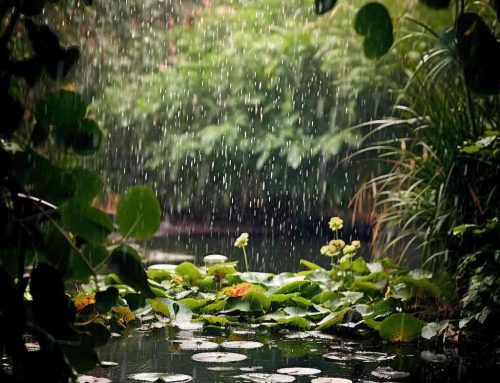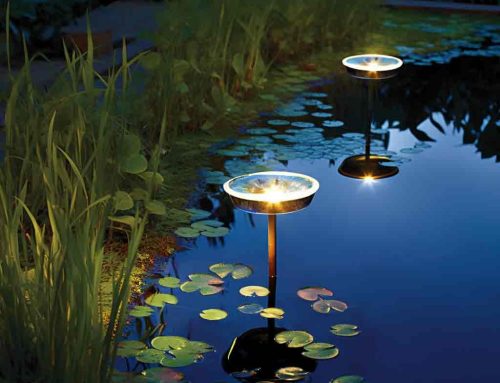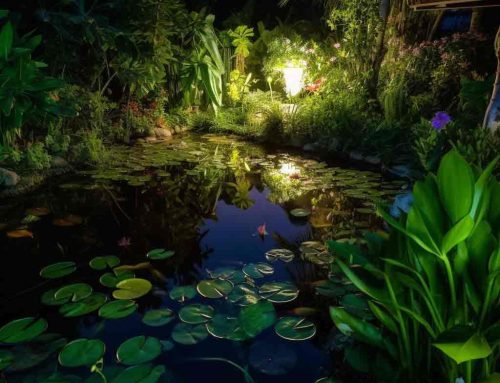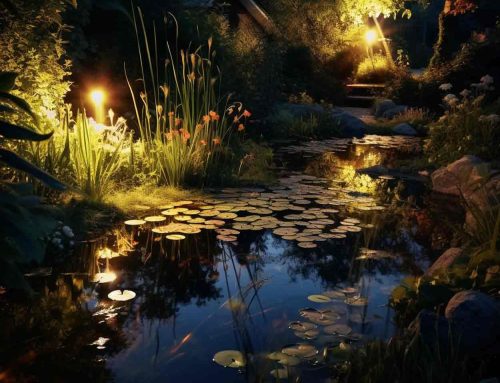
Mini Wildlife Pond
A mini wildlife pond is a small, shallow body of water that is designed to provide a habitat for aquatic creatures such as frogs, newts, and dragonflies, as well as other animals that visit the water, such as birds and hedgehogs. These ponds are typically much smaller than traditional garden ponds, and can be created using a variety of materials such as pre-formed liners, flexible liners, or even repurposed containers such as old sinks or bathtubs.
Mini wildlife ponds are often created in gardens or other outdoor spaces to provide a natural, wildlife-friendly feature that can help to support local ecosystems. They can be planted with a variety of aquatic plants such as water lilies and rushes, which can help to provide cover and food for wildlife, and can also be surrounded by other native plants to create a diverse and attractive habitat for a range of creatures.
Jump to specific section
What can I use to make a small wildlife pond?
To create a small wildlife pond, you can use a variety of materials such as a pre-formed liner, a flexible liner, or even repurposed containers like an old sink or bathtub. Choosing a suitable spot is important as it will help determine the size and shape of your pond. If the container isn’t watertight, then adding a piece of pond liner will ensure the water stays in place. Adding a layer of gravel and rocks on the bottom of the pond will provide a substrate for aquatic plants and can also be used as a hiding spot for some aquatic creatures. Once everything is in place, fill your pond with water and let it settle for a few days before adding any aquatic plants or creatures.
How do you make a simple wildlife pond?
Making a simple wildlife pond involves digging out an area of shallow ground, ensuring it’s large enough so that it won’t dry out. If you’d rather make more of a bog garden rather that a traditional pond, puncture the lining to allow for some drainage to occur. Planting the pond with bog-loving plants such as purple loosestrife, marsh marigold, and water mint will not only help to stabilise the soil but also provide a food source for aquatic creatures like dragonfly larvae. Creating a wildlife pond can be a fun and educational project for families or individuals, and it’s a great way to create a small ecosystem right in your backyard.
How do you keep a small wildlife pond clear?
Maintaining a clear wildlife pond can be a challenge, but it’s important for the health of the aquatic creatures that call it home. During hot, calm days where the water is still and warm from the sun, breaking the surface with a brief spray of a hose can help to disturb and aerate the water a little. Introducing plants like water lilies, which have floating leaves, can also help to reduce the amount of sunlight the algae can get, preventing it from growing out of control. Additionally, it’s important to remove any debris, such as fallen leaves or twigs, from the surface of the pond regularly to prevent them from breaking down and adding extra nutrients to the water.
Should you put anything at the bottom of a wildlife pond?
To create a suitable habitat for aquatic creatures, it’s recommended to use pond substrates like sand and washed gravel at the bottom of the pond. This will provide a substrate for planting and places for creatures like dragonfly larvae to burrow into. It’s important to allow wildlife to come to the pond naturally, and not add sludge from another pond to “get it started.”
Should I put gravel in my wildlife pond?
Since wildlife ponds are not typically cleaned on a regular basis, it’s perfectly fine to cover the bottom of the pond with rocks or gravel. This provides tiny openings that encourage the growth of microbial life, which can help to create a healthy ecosystem in the pond. The gravel also provides a surface for aquatic plants to anchor to and a hiding spot for some aquatic creatures.
Do you need soil in a wildlife pond?
While not necessary, a deep layer of aquatic soil in a wildlife pond can provide rooting for marginal and moisture-loving plants, as well as extra habitat for aquatic invertebrates. It’s recommended to use purpose-made aquatic soil or lime-free playpit sand instead of regular garden soil. However, putting pond plants in special aquatic baskets is better than adding a layer of soil all over the bottom of the pond. Too much soil can create an excess of nutrients, which can encourage algae growth and lead to poor water quality.
Can you make a wildlife pond without a liner?
It’s possible to make a wildlife pond without a full liner, but it’s important to consider the foundations and create a spillway to prevent water loss. Ponds constructed in this way should not be deeper than ten feet, as the overhead pressure could be too much for the base to remain stable. While using a liner is the easiest and most common method for constructing a pond, it’s important to choose a suitable location that is not too close to trees or shrubs that could puncture the liner.
How do you keep a wildlife pond clean?
To maintain a clean and healthy wildlife pond, there are several steps you can take. First, cut back and maintain vegetation each season to prevent debris from falling into the pond. Planting a variety of plants for different wildlife can also help to balance the ecosystem. Controlling algae growth and blooms is important, and reducing bottom sediment (when critical) can prevent nutrient buildup. Creating additional shade in extreme weather can help to regulate water temperature and reduce algae growth.
Does a small wildlife pond need a pump?
No, a small wildlife pond does not require a pump. Submerged plants like oxygenators and water lilies are capable of adding all the required oxygen to the water. The movement of the water caused by a pump can sometimes have a negative effect on the wildlife living in the pond, especially if it creates too much turbulence or disturbs the natural balance of the ecosystem. If you choose to use a pump, make sure to choose a suitable model that is not too powerful for the size of the pond.
Should a wildlife pond be in sun or shade?
When building a wildlife pond, it’s generally advisable to choose a sunny spot, as this will help to promote the growth of aquatic plants and algae, which in turn will provide food and shelter for aquatic creatures. However, it’s also possible to site a pond in an area that is partially shaded or sits in dappled shade. This can help to regulate the temperature of the water during hot weather and prevent algae growth. The important thing is to choose a location that receives adequate sunlight while also taking into consideration other factors, such as proximity to trees or shrubs.
How do I keep my wildlife pond water clear?
To keep your wildlife pond water clear, it’s important to maintain the balance of the ecosystem. Breaking the surface of the water with a brief spray of a hose can help to disturb and aerate the water during hot calm days. Introducing plants like water lilies, which have floating leaves, can also help to reduce the amount of sunlight that algae can get. It’s important to remove any debris, such as fallen leaves or twigs, from the surface of the pond regularly to prevent them from breaking down and adding extra nutrients to the water. Additionally, avoiding overfeeding any fish or wildlife that may live in the pond can prevent excess nutrients from building up in the water.
How do you oxygenate a wildlife pond?
One simple way to add oxygen to a wildlife pond is to install an air pump. The pump sits on the edge of the pond and pumps air through a small hose to an air stone, which releases bubbles into the water. As the bubbles rise to the surface and break, they add oxygen to the water. Another way to increase oxygen levels is to add plants that release oxygen during photosynthesis. Submerged plants like oxygenators and floating plants like water lilies are particularly effective at oxygenating the water. It’s also important to avoid overstocking the pond with fish, as this can lead to a decrease in oxygen levels.
How small can a wildlife pond be?
A depth of 20-60cm (8in-2ft) varied across the pond will suit the majority of pond flora and fauna. Even a small pond in a pot can provide a habitat and water source for garden wildlife. A mini wildlife pond can be created using an old container or large bowl, lined with a pond liner and filled with water. Planting the pond with a variety of native species will help to support the local ecosystem and attract wildlife. Remember to choose plants that suit the size of the pond and the amount of sunlight it receives.
Do wildlife ponds need shade or sun?
While it’s generally advisable to build a wildlife pond in a sunny spot, it is possible to site a pond in an area that is partially shaded or sits in dappled shade. Placing the pond in the sun will help to promote the growth of aquatic plants and algae, which in turn will provide food and shelter for aquatic creatures. However, too much direct sunlight can lead to problems with algae growth and cause the water to become too warm. Situating the pond in a shady area can help to regulate the water temperature and prevent algae growth. When choosing a site for your wildlife pond, consider factors such as proximity to trees and other vegetation, as well as the amount of sunlight it will receive.
Do you need planning permission for a wildlife pond?
Excavating a pond, even a small and shallow one, may be defined as an engineering operation that requires planning permission. It’s always best to check with your local planning authority before beginning work on your pond to determine whether any permits or approvals are necessary. Depending on the size and location of the pond, there may be additional regulations or restrictions that apply. It’s important to follow all applicable laws and regulations when building a wildlife pond, to ensure that it is safe and sustainable for both wildlife and humans.
Should a wildlife pond have fish?
Adding fish to a wildlife pond is not always recommended, as they can disturb the delicate ecosystem of the pond. Fish can prey on other wildlife such as insects, tadpoles, and frog spawn, reducing the biodiversity of the pond. Additionally, fish excrement can lead to an excess of nutrients in the water, which can promote the growth of algae and other unwanted plants. However, if you do choose to add fish to your pond, it’s important to select species that are suitable for the size of the pond and the local climate. It’s also important to avoid overstocking the pond, as this can lead to problems with water quality.
Are wildlife ponds easy to maintain?
Wildlife ponds require less maintenance than fish ponds, but some upkeep is still necessary. During the winter, it’s important to remove any snow or ice from the surface of the pond to allow light to penetrate and promote the growth of submerged plants. In the spring and summer, it’s important to control the growth of algae and other unwanted plants, which can be done through the use of natural methods such as introducing additional plants or manually removing excess growth. It’s also important to regularly remove any debris or dead plant matter from the pond to prevent it from accumulating on the bottom.
What shape should a wildlife pond be?
Irregular, kidney or rounded shapes are generally considered the best for wildlife ponds, as they provide a more natural look and feel. Straight lines and sharp corners can look artificial and may not blend in with the surrounding environment as well as a more organic shape. When planning the shape of your pond, it’s important to consider factors such as the size of the space available, the amount of sunlight the pond will receive, and the local climate. A well-designed pond can not only provide a habitat for wildlife, but also add a beautiful focal point to your garden or outdoor space.
Conclusion
In conclusion, wildlife ponds can be a wonderful addition to any garden or outdoor space, providing a natural habitat for a variety of creatures and plants. To create a healthy and thriving pond, it’s important to carefully consider factors such as the size, location, and shape of the pond, as well as the types of plants and wildlife you want to include. With some basic maintenance and upkeep, a wildlife pond can be a low-maintenance yet beautiful feature that adds to the overall health and biodiversity of your local environment.
Last Modified: April 3, 2023







